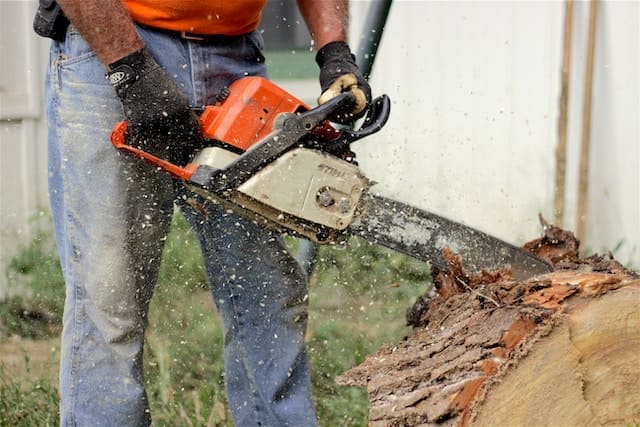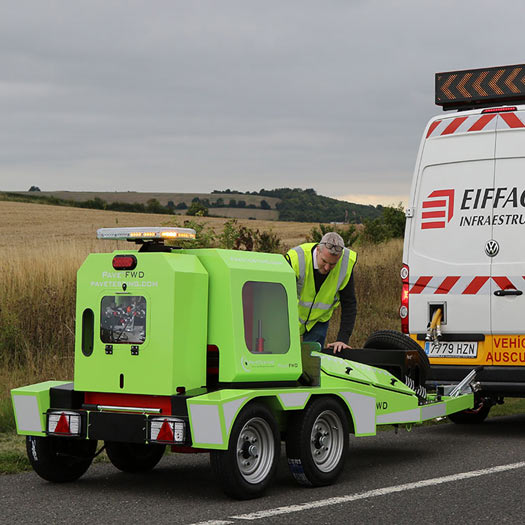
This article examines the factors that contribute to the best chainsaw for home use and provides guidelines for safe storage.
It presents a comprehensive analysis of essential features that should be considered when selecting a chainsaw for residential purposes.
Additionally, it offers safety precautions to mitigate potential risks associated with operating a chainsaw at home.
Furthermore, it discusses proper maintenance and care necessary for optimal performance and longevity.
Lastly, it highlights effective strategies for safely storing a chainsaw to prevent accidents.
Factors to Consider When Choosing a Chainsaw for Home Use
One important factor to consider when choosing a chainsaw for home use is the power-to-weight ratio of the tool. This ratio determines how efficiently the chainsaw can perform various tasks while ensuring ease of handling and maneuverability. A chainsaw with a favorable power-to-weight ratio allows users to tackle different cutting jobs without excessive fatigue or strain.
In addition to considering the power-to-weight ratio, it is essential to prioritize proper chainsaw maintenance and storage tips. Regular maintenance, such as sharpening the chain, checking and tightening bolts, and cleaning debris from air filters, ensures optimal performance and extends the lifespan of the tool. Proper storage is equally crucial to prevent damage caused by moisture or dust accumulation. Storing the chainsaw in a dry place, away from extreme temperatures or direct sunlight, helps maintain its functionality over time.
Understanding these factors will aid in selecting an ideal chainsaw for home use that balances power and weight effectively. However, it is also important to consider other essential features of a home-use chainsaw that enhance safety and performance without compromising on user satisfaction.
Essential Features of a Home-Use Chainsaw
This discussion will focus on the essential features of a home-use chainsaw, specifically power and efficiency, lightweight and maneuverability, and safety features included.
Power and efficiency are important factors to consider as they determine how effectively the chainsaw can cut through various types of wood.
Additionally, a lightweight and maneuverable chainsaw is crucial for easy handling and reduced fatigue during prolonged use.
Lastly, safety features such as chain brakes, handguards, and anti-vibration systems play a vital role in preventing accidents and ensuring user protection while operating the chainsaw.
Power and Efficiency
Power and efficiency are crucial considerations when selecting a chainsaw for home use. Homeowners desire a chainsaw that combines the necessary power capabilities with fuel efficiency to ensure optimal performance while minimizing costs and environmental impact. Here are four key factors to consider when assessing power and efficiency:
- Engine size: A larger engine provides more power, allowing for faster cutting and easier handling of tougher materials.
- Horsepower: Higher horsepower translates to increased cutting speed, making it easier to tackle larger tasks efficiently.
- Fuel consumption: Look for chainsaws that offer good fuel efficiency, as this will reduce operating costs and minimize environmental harm.
- Chain speed: Chainsaws with higher chain speeds deliver quicker cutting action, enhancing productivity without sacrificing precision.
Considering these aspects ensures the selection of a chainsaw that offers the desired power capabilities and fuel efficiency for effective home use.
As we transition into the next section about ‘lightweight and maneuverable,’ it is important to consider how these features complement power and efficiency in achieving an ideal chainsaw for homeowners’ needs.
Lightweight and Maneuverable
A chainsaw’s lightweight and maneuverable design contributes to its overall usability and efficiency in various cutting tasks. These characteristics make it an ideal tool for home use, as they allow for easy handling and operation by individuals of different skill levels. Chainsaws that are compact and portable provide added convenience, allowing users to easily transport them to different locations. The ease of use and handling further enhances the user experience, enabling efficient completion of cutting tasks with minimal effort. To illustrate the benefits of a lightweight and maneuverable chainsaw design, consider the following table:
| Benefits of Lightweight and Maneuverable Chainsaw Design |
|---|
| Compact Size |
| Portability |
| Ease of Use |
Safety Features Included
Safety features included in the design of chainsaws enhance user protection and minimize the risk of accidents during operation. These safety features are essential for individuals who desire to use chainsaws at home, as they provide an added layer of security. Some common safety features found on chainsaws include chain brakes, which automatically stop the chain from rotating in case of kickback or other sudden movements; handguards, which shield the hands from accidental contact with the chain; and anti-vibration systems, which reduce fatigue and improve control during prolonged use.
In addition to these safety features, proper storage of chainsaws is crucial to prevent accidents when not in use. Storing a chainsaw in a secure location, away from children and unauthorized users, helps ensure that it is not accidentally operated without appropriate precautions.
Transitioning into the subsequent section about safety precautions for operating a chainsaw at home: While safety features and proper storage play significant roles in minimizing risks associated with using chainsaws at home, there are additional precautions that should be followed to ensure safe operation.
Safety Precautions for Operating a Chainsaw at Home
To minimize the risk of accidents when operating a chainsaw at home, adherence to proper safety precautions is crucial. Chainsaw maintenance plays a significant role in ensuring safe operation. Before using a chainsaw, it is essential to inspect it thoroughly and ensure that all parts are in good working condition. This includes checking the chain for sharpness and tension, inspecting the bar for wear or damage, and making sure that all safety features are functioning correctly.
When operating a chainsaw safely at home, there are several precautions to keep in mind. Firstly, it is important to wear appropriate personal protective equipment (PPE), including eye protection, hearing protection, gloves, and sturdy footwear. Additionally, maintaining a firm grip on the chainsaw with both hands while cutting can help prevent loss of control.
Furthermore, clearing the work area of any obstacles or tripping hazards before starting the chainsaw is crucial for safe operation. It is also advisable to avoid working alone if possible and to let someone know about your activities beforehand.
In conclusion, operating a chainsaw safely at home requires proper maintenance and adherence to safety precautions. By following these guidelines and taking necessary precautions when using a chainsaw at home, one can significantly reduce the risk of accidents and ensure personal safety.
(Transition) Now that we have discussed the importance of safety precautions during operation let us move on to understanding proper maintenance and care for a home-use chainsaw without compromising safety.
Proper Maintenance and Care for a Home-Use Chainsaw
Proper maintenance and care for a home-use chainsaw involves regular inspection and servicing of its various components to ensure optimal performance. By following these maintenance tips and sharpening techniques, you can prolong the lifespan of your chainsaw and enhance its efficiency:
- Regularly inspect the chain tension, ensuring it is properly adjusted.
- Clean debris from the air filter regularly to prevent clogging.
- Check the fuel mixture ratio according to the manufacturer’s instructions.
- Use high-quality fuel with appropriate additives.
- Store fuel in a cool, dry location away from direct sunlight.
Sharpening techniques are crucial for maintaining a sharp cutting edge on your chainsaw:
- Invest in a quality file or chainsaw sharpener tool.
- Follow proper filing angles recommended by the manufacturer.
- Use a depth gauge tool to maintain proper depth settings.
By implementing these maintenance tips and sharpening techniques, you can keep your home-use chainsaw in optimal condition. This will ensure safer operation, efficient cutting performance, and increased longevity.
Now let’s explore how storing a chainsaw safely can help prevent accidents without compromising its functionality.
Storing a Chainsaw Safely to Prevent Accidents
Proper maintenance and care are essential for the longevity and optimal performance of a home-use chainsaw. However, it is equally important to store the chainsaw safely in order to prevent accidents. Chainsaws, being powerful and potentially dangerous tools, require specific safety precautions when not in use.
To prevent accidents and ensure chainsaw safety during storage, there are several key steps that should be followed.
First and foremost, always disconnect the spark plug wire before storing the chainsaw. This simple precaution eliminates any risk of accidental starting while the tool is not in use.
Additionally, it is crucial to store the chainsaw in a secure and locked location that is inaccessible to children or unauthorized individuals. This prevents any potential misuse or accidents caused by inexperienced individuals.
Furthermore, it is recommended to clean the chainsaw thoroughly before storing it. Removing dirt, debris, and excess oil will help maintain its condition over time.
By taking these preventive measures and following proper chainsaw safety precautions during storage, you can significantly reduce the risk of accidents or injuries related to your home-use chainsaw.
Transitioning into the subsequent section about tips for long-term storage of a home-use chainsaw…
Tips for Long-Term Storage of a Home-Use Chainsaw
This section will discuss important tips for the long-term storage of a home-use chainsaw.
Proper storage is crucial to maintain the functionality and safety of a chainsaw when it is not in use.
Rust prevention techniques are essential to protect the metal components from corrosion and deterioration.
Implementing strategies to ensure long-lasting performance will help extend the lifespan of the chainsaw and optimize its efficiency during operation.
Proper Chainsaw Storage
Adequate chainsaw storage is essential for maintaining the tool’s longevity and ensuring safety when not in use. Proper storage not only protects the chainsaw from damage but also prevents accidents that may occur if it is not stored correctly. To provide a clear understanding of proper chainsaw storage, the following table illustrates key points to consider:
| Chainsaw Storage Tips | Description |
|---|---|
| Store in a dry and well-ventilated area | Moisture can lead to rust and damage |
| Keep away from flammable materials | Reduces the risk of fire hazards |
| Use a sturdy case or wall mount | Prevents accidental falls or tipping over |
| Securely lock up when not in use | Minimizes access by unauthorized users |
Preventing Rust and Damage
Implementing effective strategies for preventing rust and damage is crucial in maintaining the longevity and functionality of a chainsaw. To protect your chainsaw from these potential threats, consider the following steps:
- Regular cleaning: Clean your chainsaw after each use to remove dirt, debris, and moisture that can contribute to rust formation. This will not only prevent corrosion but also ensure optimal performance.
- Lubrication: Apply a thin layer of oil to the chain and other moving parts regularly. This helps reduce friction, prevents rust, and prolongs the lifespan of your chainsaw.
- Proper storage: Store your chainsaw in a dry and well-ventilated area, preferably in a case or sheath specifically designed for chainsaws. This protects it from dust, moisture, and potential physical damage.
Ensuring Long-Lasting Performance
To ensure long-lasting performance of a chainsaw, proper cleaning and lubrication practices must be followed, along with storing it in a suitable environment. Regular maintenance is essential to keep the chainsaw functioning efficiently and to prevent any damage that may occur due to neglect or improper care. This can be achieved by regularly cleaning the saw after each use, removing any debris or sawdust that may have accumulated on the body or chain. Additionally, lubricating the chain and other moving parts will help reduce friction and wear. Storing the chainsaw in a dry and well-ventilated area away from extreme temperatures and humidity will also contribute to its durability. By adopting these practices, users can maintain optimal performance of their chainsaws for an extended period.
| Maintenance Practice | Importance |
|---|---|
| Cleaning | High |
| Lubrication | High |
| Proper storage | Medium |
Table: Importance of Chainsaw Maintenance Practices
Frequently Asked Questions
Can a Chainsaw Be Used Indoors for Home Projects?
Using a chainsaw indoors for home projects raises safety concerns. Safety precautions for indoor chainsaw use are crucial to prevent accidents and ensure a safe environment.
Chainsaws emit fumes that can be harmful when used in enclosed spaces, posing health risks. Additionally, the noise level produced by chainsaws may disrupt the peace and tranquility of an indoor setting.
Therefore, it is generally not recommended to use a chainsaw indoors unless proper ventilation measures are in place and safety protocols are strictly followed.
How Often Should the Chain Be Sharpened on a Home-Use Chainsaw?
The chain sharpening frequency of a home-use chainsaw is an important aspect to consider for proper chain maintenance. Regularly sharpening the chain ensures optimal cutting performance and extends the lifespan of the chainsaw. Neglecting this maintenance task may result in decreased cutting efficiency, increased wear on the chainsaw components, and potential safety hazards.
Therefore, it is advisable to follow manufacturer recommendations or consult a professional regarding the appropriate frequency of chain sharpening for a home-use chainsaw.
Can a Home-Use Chainsaw Be Used for Cutting Down Large Trees?
The use of a home-use chainsaw for cutting down large trees depends on several factors.
Firstly, the cutting techniques employed are crucial in determining the feasibility of using such a chainsaw for this purpose.
Secondly, choosing the right chainsaw with appropriate specifications and power is essential to ensure safety and efficiency.
Considering these factors would enable homeowners to assess whether a home-use chainsaw is suitable for cutting down large trees or if they should seek professional assistance.
Is It Necessary to Wear Safety Gear While Operating a Chainsaw at Home?
The use of safety gear while operating a chainsaw at home is of utmost importance. Proper handling techniques and precautions should be followed to ensure personal safety.
Safety gear such as protective eyewear, ear protection, gloves, and sturdy footwear are essential for preventing injuries. These measures significantly reduce the risk of accidents or harm caused by flying debris, noise exposure, or accidental contact with the chainsaw’s moving parts.
Adhering to proper safety practices enhances the overall safety and effectiveness of using a chainsaw at home.
What Are the Potential Dangers of Improper Chainsaw Storage?
Improper storage of chainsaws can lead to accidents, injuries, and damage to the chainsaw itself. It is important to store a chainsaw in a dry and secure location, away from children and pets.
Failure to do so can result in potential dangers such as accidental activation of the chainsaw, which may cause severe injuries. Additionally, exposure to moisture or extreme temperatures can damage the chainsaw’s engine and other components.
Therefore, proper storage practices are essential for maintaining safety and prolonging the lifespan of a chainsaw.
Conclusion
In conclusion, when selecting a chainsaw for home use, it is important to consider factors such as power source, bar length, and safety features.
Essential features of a home-use chainsaw include lightweight design, low vibration levels, and easy start mechanisms.
To operate a chainsaw safely at home, proper protective gear should be worn and safety precautions followed.
Regular maintenance and care are crucial for ensuring the longevity of the chainsaw.
Additionally, storing the chainsaw safely in a secure location helps prevent accidents and ensures its long-term functionality.















